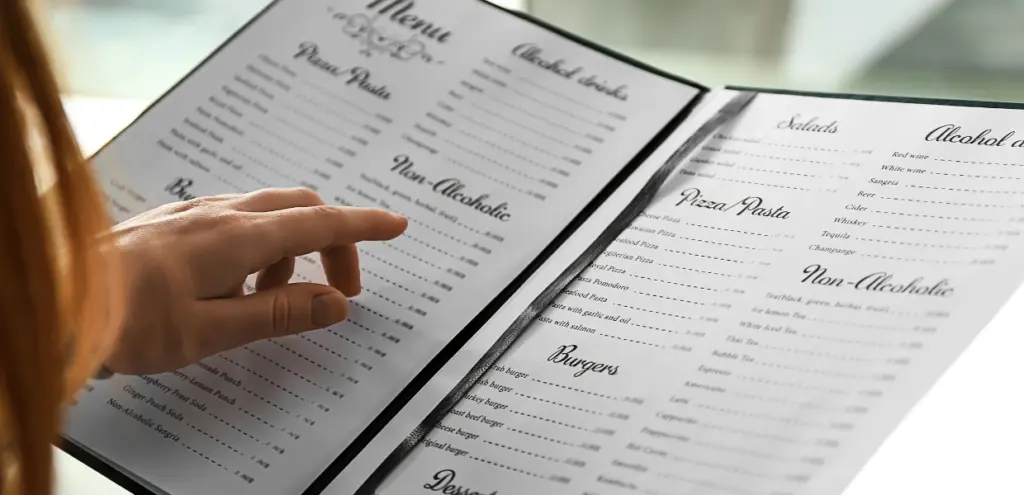All Articles
How to Create a Restaurant Business Plan

Opening a restaurant is an exciting yet challenging venture. The restaurant industry is very competitive, and success often hinges on the effectiveness of planning and execution. One of the most important tools for guiding your business is a restaurant business plan. This document serves as a roadmap for your concept, financials, operations, and growth strategy. A strong plan is not only critical for internal decision-making but is also vital for attracting investors and securing loans.
In this guide, I will cover all the essential elements needed to craft a comprehensive restaurant business plan. Whether you are starting a new restaurant from scratch or expanding an existing one, this plan will provide a clear path forward and position you for success.
1. Executive Summary
The executive summary is the first section of your restaurant business plan, but it’s often best to write it last. It provides a high-level overview of the entire plan, offering a snapshot of your restaurant’s concept, mission, and strategy. This section should be concise yet impactful, capturing the attention of potential investors or partners right away. If it fails to engage them, many may not continue reading. Think of it as your elevator pitch—brief but compelling.
Key Elements of the Executive Summary:
- Restaurant Concept: Provide a brief description of your restaurant concept. Is it a fast-casual eatery, fine dining, or a gastropub? What type of cuisine will you serve?
- Mission Statement: Your mission statement should encapsulate your restaurant’s core values and goals. Are you aiming to provide a unique dining experience, prioritize sustainability, or focus on locally sourced ingredients?
- Objectives: Clearly outline your business objectives, both short-term and long-term. This could include revenue milestones, customer acquisition goals, or plans for future expansion.
- Key Financials: Offer a snapshot of expected financials, including projected revenue, profit margins, and the amount of funding you require.
- Ownership Structure: Indicate the legal structure of your business. Is it a sole proprietorship, partnership, or limited liability company (LLC)?
2. Market Research and Analysis

Comprehensive market research is essential to validate your restaurant concept and ensure there is demand for it in your chosen location. This section should demonstrate that you understand the industry, local market, and competition. Investors will look closely at this data to assess whether your restaurant can succeed in a competitive landscape.
Key Aspects of Market Research:
- Industry Trends: Discuss broader industry trends that are relevant to your concept. For instance, there is been a rise in plant-based dining, sustainable restaurants, and technology integration like online ordering and delivery. Explain how your restaurant fits into or capitalizes on these trends.
- Local Market Analysis: Research your local market to determine whether there is demand for your type of restaurant. Are you filling a gap in the market? What are people’s dining habits in your area?
- Competitive Analysis: Conduct a detailed analysis of your competition. Identify direct and indirect competitors, examine their strengths and weaknesses, and determine what will set your restaurant apart. A SWOT analysis (Strengths, Weaknesses, Opportunities, Threats) is particularly useful for understanding the competitive landscape.
- Customer Demographics: Dive deep into the demographics of your target audience, including age, income level, dining preferences, and lifestyle habits. Tailor your restaurant’s offerings and marketing strategies to align with these customer characteristics.
A well-executed market research section not only informs your strategic decisions but also helps you make a compelling case to investors or lenders.
3. Marketing and Sales Strategy
Once you have defined your concept and researched your market, you will need a plan for attracting and retaining customers. A strong marketing and sales strategy is essential for building awareness, driving foot traffic, and ensuring long-term success. This section should outline how you plan to position your brand, promote your restaurant, and engage with customers.
Components of a Successful Marketing Strategy:
- Brand Positioning: Define how you want your restaurant to be perceived in the market. What is your unique selling proposition (USP)? How will you position your restaurant to stand out from competitors?
- Pricing Strategy: Your pricing should align with your brand and market positioning. For example, fine dining establishments often use premium pricing, while fast-casual eateries may adopt competitive pricing to attract price-conscious customers. Make sure your prices are in line with both your target audience and your cost structure.
- Promotional Tactics: List the specific tactics you will use to generate buzz and attract customers. This could include a grand opening event, social media campaigns, loyalty programs, or partnerships with local businesses. Consider offering discounts or special promotions, especially when launching.
- Online Presence and Social Media: In today’s digital age, having an online presence is essential. Outline your strategy for maintaining a professional website, active social media accounts, and profiles on platforms like Google My Business, Yelp, and delivery apps. Social media is a powerful tool for engaging with your audience, so plan to use Instagram, Facebook, Twitter, or even TikTok to showcase your dishes and promotions.
- Customer Retention Strategies: Building a loyal customer base is crucial for long-term success. Consider implementing a loyalty program, offering discounts for repeat customers, or gathering customer feedback to continually improve the dining experience.
4. Operations Plan
Your operations plan outlines the day-to-day processes of running your restaurant. This includes staffing, supplier relationships, equipment, and logistics. A well-thought-out operations plan ensures that your restaurant runs efficiently and consistently, providing a high-quality experience for your customers.
Key Areas to Cover:
- Staffing Requirements: Detail the types of staff you’ll need, from chefs and servers to dishwashers and managers. Consider outlining your hiring and training processes to ensure you have a skilled and motivated team. Also, describe any specific roles, such as a sommelier, pastry chef, or barista, depending on your concept.
- Hours of Operation: Clearly define your restaurant’s operating hours. Will you be open for breakfast, lunch, and dinner? Will you offer brunch on weekends? Make sure your hours align with customer traffic patterns and community needs.
- Supplier and Vendor Relationships: Identify your suppliers for key ingredients, beverages, and equipment. Establish strong relationships with reliable vendors to ensure consistent quality and availability. Additionally, it is wise to have backup suppliers in case of shortages or disruptions.
- Technology Integration: Today’s restaurants benefit from using technology like point-of-sale (POS) systems, online reservation platforms, and customer feedback tools. Describe the technology you plan to implement and how it will improve efficiency and the customer experience.
- Health and Safety Protocols: Food safety and sanitation are non-negotiable in the restaurant industry. Ensure your restaurant business plan describes how you will comply with local health department regulations and guidelines.
The more meticulously your plan addresses restaurant operations, the better you can ensure your restaurant delivers on its promises and maintains consistency in both service and product.
5. Menu Design and Development

Your menu is one of the most important aspects of your restaurant’s brand. It not only defines what you serve but also reflects your concept, pricing strategy, and overall customer experience. A well-crafted menu can set the tone for your dining establishment and entice customers to return.
Considerations for Menu Design:
- Menu Structure: Organize your menu so that it is easy for customers to navigate. This could mean breaking it down by appetizers, mains, sides, and desserts or by categories like vegan, gluten-free, or kid-friendly options.
- Signature Dishes: Highlight any standout dishes that differentiate your restaurant from competitors. These could be signature entrées, a chef’s specialty, or unique drinks.
- Pricing Strategy: Your menu prices should align with your target audience and food costs. For example, upscale dining establishments often use higher prices to reflect the premium quality of ingredients and experience, while a fast-casual restaurant might focus on affordable yet satisfying options.
- Menu Design: The visual design of your menu is also crucial. It should be easy to read, aesthetically pleasing, and reflective of your restaurant’s brand identity. Consider hiring a professional graphic designer to ensure the menu’s layout, fonts, and color scheme are consistent with your overall concept.
6. Financial Plan
The Financial Plan is arguably the most important section of your business plan, particularly if you’re seeking investment or financing. This section will demonstrate your restaurant’s financial viability, including your expected costs, projected revenue, and profitability.
Key Financial Components:
- Startup Costs: List all the costs associated with launching your restaurant. This includes leasing or buying property, renovations, equipment, initial inventory, and legal fees. Remember to account for working capital to cover your first few months of operation. For a more detailed breakdown of how much it costs to open a restaurant, check the TapTasty article: How Much Does It Cost to Open a Restaurant.
- Revenue Projections: Use data from your market research to forecast your expected revenue. This could include multiple revenue streams, such as dine-in sales, takeout, delivery, and catering.
- Expense Projections: List your fixed and variable costs, including rent, salaries, utilities, food supplies, and marketing expenses. Accurate cost projections are essential for understanding your restaurant’s profitability.
- Profit and Loss Statement (P&L): Provide a projected income statement, which shows your revenue, costs, and profits over the next 3-5 years. This will help you understand when your restaurant will break even and become profitable.
- Break-even Analysis: Calculate how much revenue you need to cover your costs. This will help you determine the minimum amount of sales required to keep your restaurant afloat.
- Funding Requirements: If you need external funding, specify how much capital you require and how you plan to use it. Be specific about whether you need funds for renovations, equipment, working capital, or marketing.
7. Management Team

The success of your restaurant depends heavily on the strength and experience of your management team. Investors will want to know who is behind the business and what qualifications they bring to the table. Use this section to highlight the key members of your team, their backgrounds, and their roles.
Include the Following:
- Biographies of Key Team Members: Provide a brief bio for each of your key team members, highlighting their relevant experience and qualifications. This could include your executive chef, general manager, or marketing director.
- Ownership Structure: Explain the ownership structure of your restaurant. Who are the founders, and what is their equity stake in the business?
- Advisors and Consultants: If you have any industry advisors, financial consultants, or mentors involved in the project, be sure to mention them here.
A strong management team can provide confidence to investors that your restaurant will be well-run and financially viable.
8. Appendix
The appendix provides supplementary materials that support your restaurant business plan. This could include anything from detailed financial documents to legal contracts or market research reports. While the appendix is optional, including it shows thoroughness and provides stakeholders with the opportunity to dive deeper into specific areas.
Items to Include:
- Resumes of Key Team Members
- Market Research Reports
- Supplier Contracts
- Lease Agreements
- Restaurant Layouts and Floor Plans
Conclusion
Writing a restaurant business plan is no small task, but it is an essential step toward turning your vision into reality. A well-crafted business plan not only acts as your blueprint but also serves as a critical tool for securing financing and attracting investors. It helps you clarify your concept, set realistic goals, and create a roadmap for success.
By addressing key areas such as market research, marketing strategies, operations, menu design, and financial planning, your business plan will provide a detailed and actionable framework. Remember, a business plan is a living document—revisit and revise it as your restaurant grows and evolves.
 30 September 2024
30 September 2024 7 min read
7 min read

